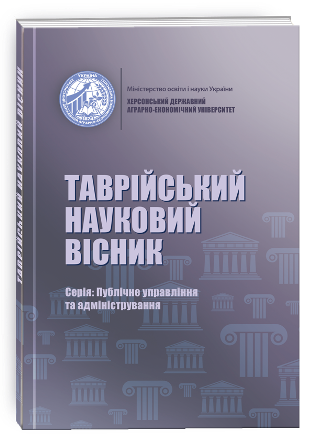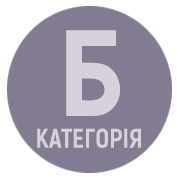SYSTEM OF MEASURES TO OPTIMIZE THE PROCESS OF INTERACTION BETWEEN THE STATE AND CIVIL SOCIETY IN UKRAINE
DOI:
https://doi.org/10.32851/tnv-pub.2021.3.4Keywords:
consolidation, Civil Society Organization, electronic technologies, public authorities, civil society representativesAbstract
Possibilities of public organizations to take part in formation of the state policy of the country or region are defined. The specificity of interaction between the public and the state in the field of public administration in Ukraine is described. The fundamental bases, on which the modern interaction of the public and the state in the field of public administration in Ukraine should be built, are determined. The main task of reforming the system of executive bodies is indicated. The importance of implementing the principle of trust of the authorities in ordinary citizens is conditioned. Potentially effective ways to optimize the process of interaction between the state and civil society are indicated. Emphasis is placed on continuing the process of improving the regulatory framework in the public administration system. Measures to optimize the process of interaction between the state and civil society are listed. It is stipulated that the process of improving the process of interaction between the state and civil society is manifested in a concentrated awareness of the importance for society of mastering a set of knowledge about the laws of managerial influence of the state. Emphasis is placed on one of the key areas of modernization of the modern government - the creation of an effective system of relations between government, business and civil society, by establishing a close and highly effective partnership between the state and the public. The conditions under which a mutually beneficial partnership between the state and civil society institutions is possible are indicated. Directions for improving the mechanism of interaction between the government and members of civil society are presented, taking into account the successful experience of foreign countries and a holistic analysis of Ukrainian realities. The importance of implementing information campaigns aimed at increasing public involvement in the development and management decisions is emphasized. It is pointed out that the format of expanding the interaction of public and state control provides a gnostic conclusion between the institutions of the civil agreement on the deconstruction of society and public authorities.
References
Левченко Д.С. Взаємодія громадськості та держави у сфері публічного адміністрування в Україні. Південноукраїнський правничий часопис. 2019. № 4. Ч. 2. С. 177–180.
Кульчій І.О. Оптимізація функцій органів виконавчої влади в контексті реформування системи державного управління. Державне управління: удосконалення та розвиток. 2012. № 8. URL: http: // nbuv. gov. ua / UJRN / Duur_2012_8_5
Колосовська І.І. Формування ефективної моделі партнерства інститутів публічної влади та громадянського суспільства. Ефективність державного управління. 2015. № 45. С. 161–166.
Взаємодія держави і суспільства в процесах публічної політики. Київ : НАДУ, 2013. С. 23.
Алексєєв В.М. Взаємовідносини держави та суспільства. Дніпро : ГРАНІ, 2019. 172 с.
Гиляров Е.М., Шабуня В.В. Общественный контроль как механизм противодействия коррупции в органах государственной власти. Гражданское общество и за рубежом. 2017. № 3. С. 77–94.
Киричек Е.В. Гражданский (общественный) контроль за деятельностью органов публичной власти в сфере обеспечения конституционных прав и свобод человека и гражданина в современном мире. Актуальные проблемы международного права. 2018. № 9. С. 123–144.
Динник І.П. Міжнародний досвід ефективної взаємодії держави і громадянського суспільства та його імплементація в практику державного управління України. Інвестиції: практика та досвід. 2019. № 3. С. 143–148.







